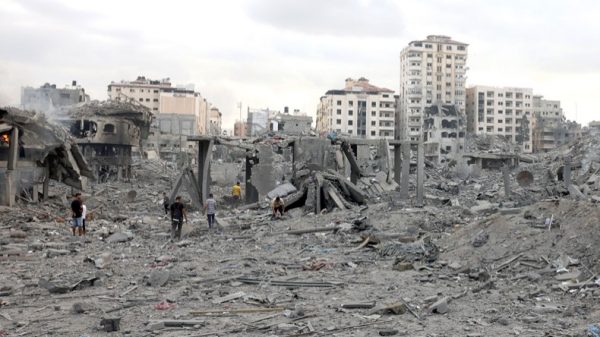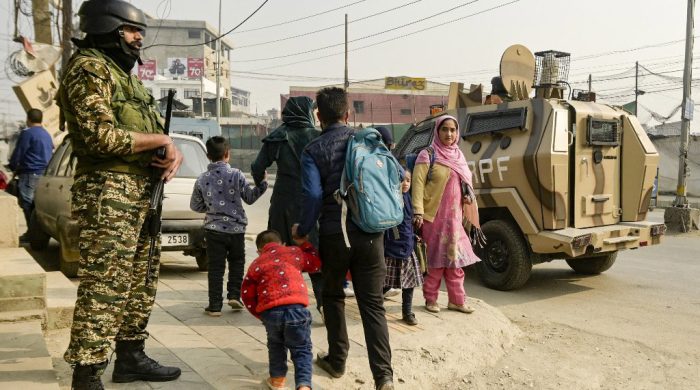Israel’s Gaza assault provides ground for Hamas

- Update Time : Saturday, October 21, 2023
- 37 Time View

More than 3,000 Palestinians have been killed in the first 11 days of the fifth war in Gaza since 2008, according to the Palestinian health authorities. Well over 10,000 have been wounded and a thousand are still missing, mainly under the rubble of bombed buildings. At least 1,400 Israelis have also died, including 279 soldiers, with a further 3,400 wounded.
Israeli Defence Forces has said it will launch a major operation in northern Gaza — Hamas’s military centre — to irreversibly destroy the group, whom Israeli president Binyamin Netanyahu described as ‘bloodthirsty monsters’. At least half a million Gazans have already fled south after an evacuation order.
History suggests Gaza will experience vast devastation in the coming days. Hamas must have anticipated this when it launched an attack on Israel on October 7, which suggests it has planned for what has followed.
There are no indications of how long northern Gaza will be closed to its people, or even whether its closure is to be permanent. Southern Gaza also houses many Hamas military facilities, so the Israeli assault on northern Gaza is expected to later continue to the south, and will likely also extend to Hamas supporters in the occupied West Bank.
US president Joe Biden is in Israel today, probably to encourage a degree of restraint by the Netanyahu government and limit Palestinian deaths and injuries, though a huge loss of life at Al-Alhi Al-Arabia hospital in Gaza City overnight is overshadowing his visit. Biden’s comments to Israel that it looks like ‘the other side’ was behind the attack on the hospital — as yet unconfirmed — suggest he will continue to back Netanyahu, as do reports from journalists in Israel of a substantial airlift of US military supplies.
To assess what will happen next, we must remember the context. Gaza was occupied by Egypt during the Israeli War of Independence from 1947 to 1949, becoming a destination for hundreds of thousands of Palestinian refugees fleeing Israeli forces. Two decades later, in the Six Day War of 1967, Israeli forces took over the Gaza Strip and evicted the Egyptians, occupying and controlling it until 2005, when Israel withdrew and passed it on to the Palestinian Authority.
Hamas narrowly won the most seats in the Palestinian legislature in 2006 but took over Gaza by force the following year, when joint rule with the PA failed. In response to this, the Israeli government imposed a blockade on the strip and, since then, overall Israeli control of Gaza has been near-total, with the territory effectively an open prison to two million people. Inhabitants survive largely due to food provided by the UN Relief and Works Agency, which also works to educate young people, many of whom are descended from the 1940s refugees. Gulf states such as Qatar also provide support.
In 2006, Hamas developed crude rockets to fire towards Israel. More recently it has developed a vast network of tunnels within Gaza and through to southern Israel and Egypt, mainly for smuggling and infiltration. Prior to the present war, Israel responded repeatedly to Hamas’s emerging power with four wars that have included intense air raids and one major ground incursion.
In the first, in 2008–09, Israel killed 1,400 Palestinians and lost 13 of their own. The third war in 2014 (the second was in 2012) included a ground war and saw the IDF take unusually heavy losses in its elite Golani Brigade. Five Israeli civilians died and the IDF lost 67 soldiers but killed 2,100 Palestinians and wounded as many as 10,000.
Even so, in recent years Israel has seen Hamas as a diminishing threat, given the numerous security measures it has taken — including its tight border controls and regular air, drone and naval patrols — and the pervasiveness of its intelligence system.
The attack on October 7 was a massive shock to the Israeli state, as well as a directly appalling experience for many thousands of ordinary Israelis. Netanyahu’s government’s survival depends on what it does next. Israel’s conduct in recent wars reveals there will be a veritable onslaught that will kill thousands more and wreck much of Gaza.
The International Institute for Strategic Studies estimates that Hamas has 15-20,000 in its militias, though Israeli sources suggest this number could be as high as 30,000. At least a third, possibly half, of its 3,000 paramilitaries who entered southern Israel on October 7 were killed. Given the IDF’s comparative size — it reportedly has 169,000 active troops and almost 500,000 reservists — and sheer firepower, how can Hamas even recruit enough young men to fight its cause?
A high Palestinian birth rate ensures a young population, and over a million people have grown up in Gaza seeing first-hand the consequences of war — including the high death tolls at the hands of Israel. Even before the events of the past fortnight, 5,365 Palestinians (including both combatants and civilians) had been killed in Gaza since the start of 2008, according to the UN Office for the Coordination of Humanitarian Affairs, which puts Israeli losses at 308 over the same time period.
Tens of thousands in Gaza still live in the 1940s refugee camps, and the area has an unemployment rate of around 50 per cent. These crowded, dangerous and impoverished urban areas make for remarkable recruiting grounds for Hamas. For young men especially, they have little to lose by joining. Given the level of planning involved, the paramilitaries behind the October 7 attack would have known their survival chances were limited and been prepared to die.
A few elements of the Hamas leadership are abroad, but most are in Gaza and have faced the risk of assassination for years, with Israel successfully killing many of them. They, too, do not expect to live long.
So when the IDF uses extreme force against Hamas and appears to succeed in crushing the group, this will be deeply deceptive. Hamas likely sees this as an early stage in a decades-long conflict that will produce tens of thousands more very angry young recruits. If that is the case, it presumably believes the war is going according to plan and, so far, it is winning.
OpenDemocracy.net, October 18. Paul Rogers is emeritus professor of peace studies in the department of peace studies and international relations at Bradford University.

























